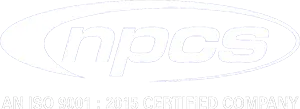Information
Bamboo Sticks - Manufacturing Plant, Detailed Project Report, Profile, Business Plan, Industry Trends, Market Research, Survey, Manufacturing Process, Machinery, Raw Materials, Feasibility study, Investment Opportunities, Cost and Revenue
Bamboo is a tribe of flowering perennial evergreen plants in the grass family Poaceae, subfamily Bambusoideae, tribe Bambuseae; although, the forestry services and departments of many countries where bamboo is utilized as a building material consider bamboo to be a forestry product, and it is specifically harvested as a tree exclusively for the wood it produces, which in many ways is a wood superior in strength and resilience to other natural, fibrous building materials. In fact it is often referred to as a tree by cultures who harvest it as wood. Giant bamboos are the largest members of the grass family. In bamboos, the internodal regions of the stem are hollow and the vascular bundles in the cross section are scattered throughout the stem instead of in a cylindrical arrangement. The dicotyledonous woody xylem is also absent. The absence of secondary growth wood causes the stems of monocots, even of palms and large bamboos, to be columnar rather than tapering.
The burning of Incense stick in religious and social functions has been practised in India and many other countries in the world. Incense is composed of aromatic biotic materials, which release fragrant smoke when burnt. The term incense refers to the substance itself, rather than to the odor it produces. Many religious ceremonies and spiritual purificatory rites employ incense, a practice that persists to this day. India has a leadership position in agarbatti production and fulfils more than half of the world's incense sticks requirements. India exports Agarbatti to nearly 90 countries.
Table of Contents
1. District Profile & Geotechnical Site Characterization
1.1. General Characteristics of the District
1.2. Location & Geographical Area
1.3. Topography
1.4. Administrative Setup
1.5. Map
1.6. Industry at a Glance
2. Introduction
3. Product and Its Applications
4. Market Survey
4.1. Market
4.2. Overview
4.3. Current Size of Selected Markets
4.4. Industry Outlook
4.4.1.Brief data on Bamboo of Madhya Pradesh
5. Export & Import Statistics Data
5.1. Export Statistics Data Bamboo Stick
5.2. Import Statistics Data Bamboo Stick
6. Bamboo Industries
6.1. Estimated Market Size
6.2. Building and Construction Material
6.3. Body Parts
6.4. Conclusion
7. Manufacturing Process
8. Process Flow Diagram
9. Pollution Control
10. Buyer’s List
10.1.Contact Details of Buyer’s
10.2.Name of Director(S)
10.3.Plant Capacity
10.4.Location of Plant
10.5.Company Wise Consumption Detail of the Raw Materials
10.6.Section – II
10.6.1. Assets
10.6.2. Cash Flow
10.6.3. Cost as % Ge of Sales
10.6.4. Forex Transaction
10.6.5. Growth in Assets & Liabilities
10.6.6. Growth in Income & Expenditure
10.6.7. Income & Expenditure
10.6.8. Liabilities
10.6.9. Liquidity Ratios
10.6.10. Profitability Ratio
10.6.11. Profits
10.6.12. Return Ratios
10.6.13. Structure of Assets & Liabilities (%)
10.6.14. Working Capital & Turnover Ratios
11. Suppliers of Plant & Machinery
11.1.Complete Machinery Suppliers
11.2.Air Compressor
11.3.Maintenance Equipments
11.4.Misc. Material Handling Equip.
11.5.Laboratory Equipment
12. Suppliers of Raw Material
12.1.Bamboo
12.2.Borax
12.3.Boric Acid
12.4.Caustic Soda
12.5.Insecticides/Pesticide
12.6.Cleaning Chemicals
12.7.Lab Chemicals
13. Product, Machinery & Raw Material Photographs
13.1.Raw Materials
13.2.Boric Acid
13.3.Borax
13.4.Boric Powder
13.5.Insecticides/Pesticide
13.6.Bamboo Cross Cutting Machine
13.7.Stick Polishing Machine
13.8.Compressor
13.9.Bamboo Sticks
14. Plant Layout
PROJECT FINANCIALS
· Project at a Glance
Annexure
· Assumptions for Profitability workings ….…………………………………………....................... 1
· Plant Economics…………………………………………………………………………….................... 2
· Production Schedule……………………………………………………………………….................... 3
· Land & Building…………………………………………………………………………….................... 4
§ Factory Land & Building
§ Site Development Expenses
· Plant & Machinery………………………………………………………………………….................... 5
§ Indigenous Machineries
§ Other Machineries (Miscellaneous, Laboratory etc.)
· Other Fixed Assets………………………………………………………………………….................... 6
§ Furniture & Fixtures
§ Pre-operative and Preliminary Expenses
§ Technical Knowhow
§ Provision of Contingencies
· Working Capital Requirement Per Month………………………………………………................. 7
§ Raw Material
§ Packing Material
§ Lab & ETP Chemical Cost
§ Consumable Store
· Overheads Required Per Month and Per Annum ……………………………………................. .8
§ Utilities & Overheads (Power, Water and Fuel Expenses etc.)
§ Royalty and Other Charges
§ Selling and Distribution Expenses
· Salary and Wages ……………………………………………………………………………................. 9
· Turnover Per Annum ………………………………………………………………………................ 10
· Share Capital…………………………………………………………………………………................ 11
§ Equity Capital
§ Preference Share Capital
• Annexure 1 :: Cost of Project and Means of Finance
• Annexure 2 :: Profitability and Net Cash Accruals
§ Revenue/Income/Realisation
§ Expenses/Cost of Products/Services/Items
§ Gross Profit
§ Financial Charges
§ Total Cost of Sales
§ Net Profit After Taxes
§ Net Cash Accruals
• Annexure 3 :: Assessment of Working Capital requirements
§ Current Assets
§ Gross Working Capital
§ Current Liabilities
§ Net Working Capital
§ Working Note for Calculation of Work-in-process
• Annexure 4 :: Sources and Disposition of Funds
• Annexure 5 :: Projected Balance Sheets
§ ROI (Average of Fixed Assets)
§ RONW (Average of Share Capital)
§ ROI (Average of Total Assets)
• Annexure 6 :: Profitability ratios
§ D.S.C.R
§ Earnings Per Share (EPS)
§ Debt Equity Ratio
• Annexure 7 :: Break-Even Analysis
§ Variable Cost & Expenses
§ Semi-Variable/Semi-Fixed Expenses
§ Profit Volume Ratio (PVR)
§ Fixed Expenses / Cost
§ B.E.P
• Annexure 8 to 11 :: Sensitivity Analysis-Price/Volume
§ Resultant N.P.B.T
§ Resultant D.S.C.R
§ Resultant PV Ratio
§ Resultant DER
§ Resultant ROI
§ Resultant BEP
• Annexure 12 :: Shareholding Pattern and Stake Status
§ Equity Capital
§ Preference Share Capital
• Annexure 13 :: Quantitative Details-Output/Sales/Stocks
§ Determined Capacity P.A of Products/Services
§ Achievable Efficiency/Yield % of Products/Services/Items
§ Net Usable Load/Capacity of Products/Services/Items
§ Expected Sales/ Revenue/ Income of Products/ Services/ Items
• Annexure 14 :: Product wise domestic Sales Realisation
• Annexure 15 :: Total Raw Material Cost
• Annexure 16 :: Raw Material Cost per unit
• Annexure 17 :: Total Lab & ETP Chemical Cost
• Annexure 18 :: Consumables, Store etc.
• Annexure 19 :: Packing Material Cost
• Annexure 20 :: Packing Material Cost Per Unit
• Annexure 21 :: Employees Expenses
• Annexure 22 :: Fuel Expenses
• Annexure 23 :: Power/Electricity Expenses
• Annexure 24 :: Royalty & Other Charges
• Annexure 25 :: Repairs & Maintenance Expenses
• Annexure 26 :: Other Manufacturing Expenses
• Annexure 27 :: Administration Expenses
• Annexure 28 :: Selling Expenses
• Annexure 29 :: Depreciation Charges – as per Books (Total)
• Annexure 30 :: Depreciation Charges – as per Books (P & M)
• Annexure 31 :: Depreciation Charges - as per IT Act WDV (Total)
• Annexure 32 :: Depreciation Charges - as per IT Act WDV (P & M)
• Annexure 33 :: Interest and Repayment - Term Loans
• Annexure 34 :: Tax on Profits
• Annexure 35 :: Projected Pay-Back Period And IRR
X
Have a business idea? Let’s make it
happen together-contact us now!




